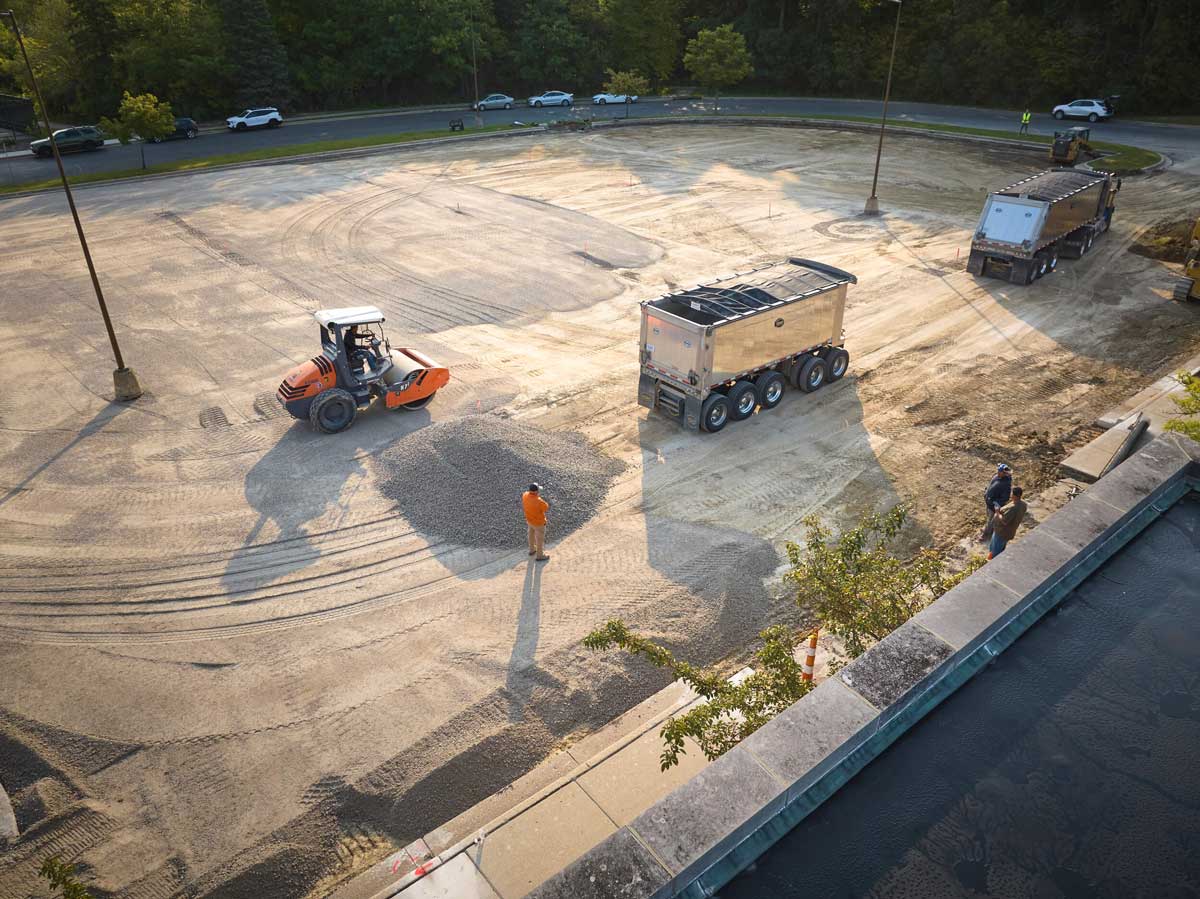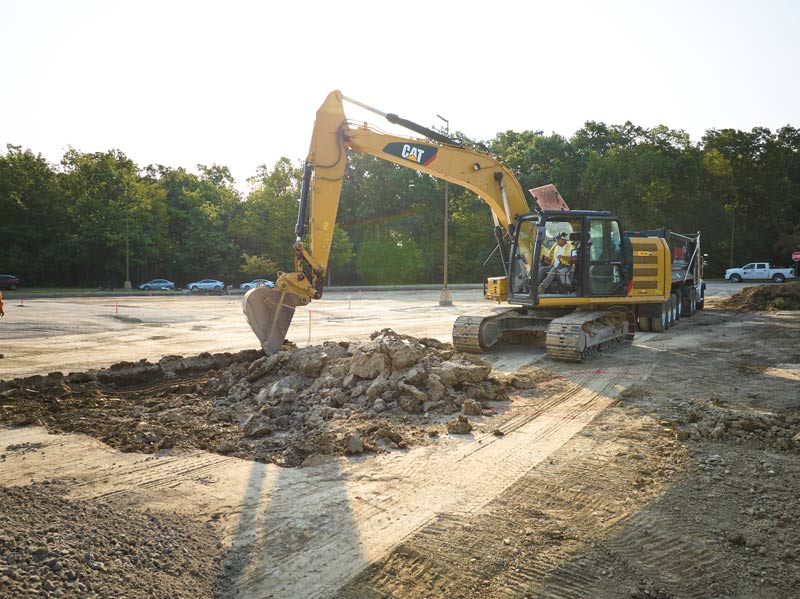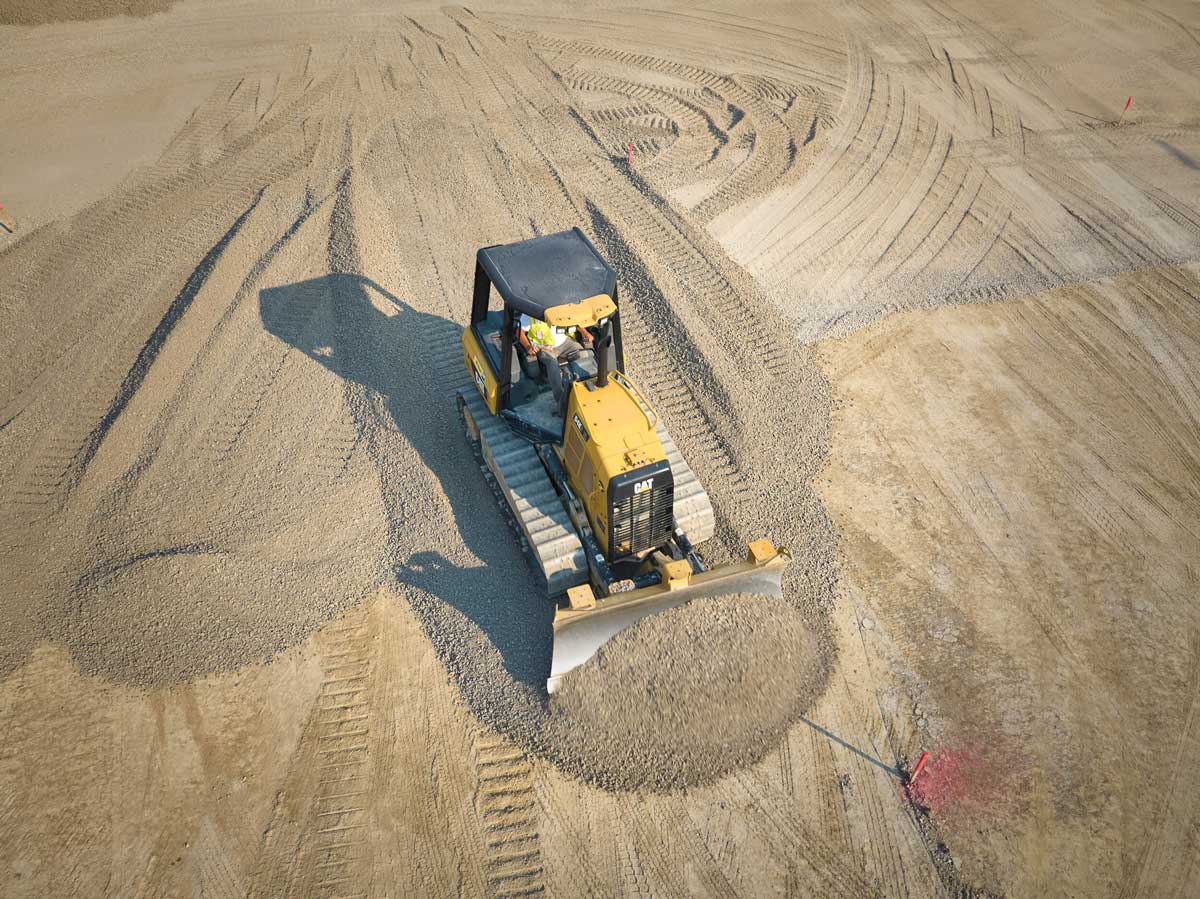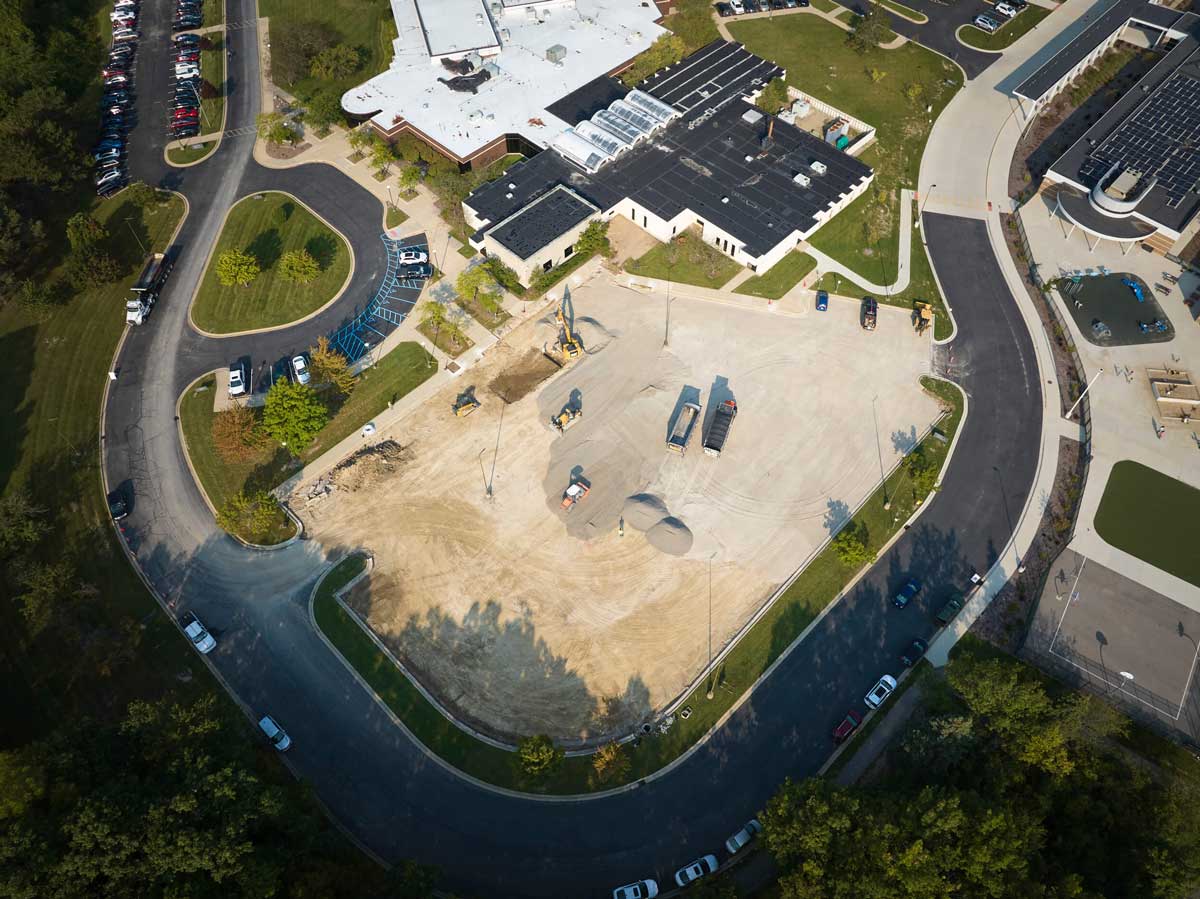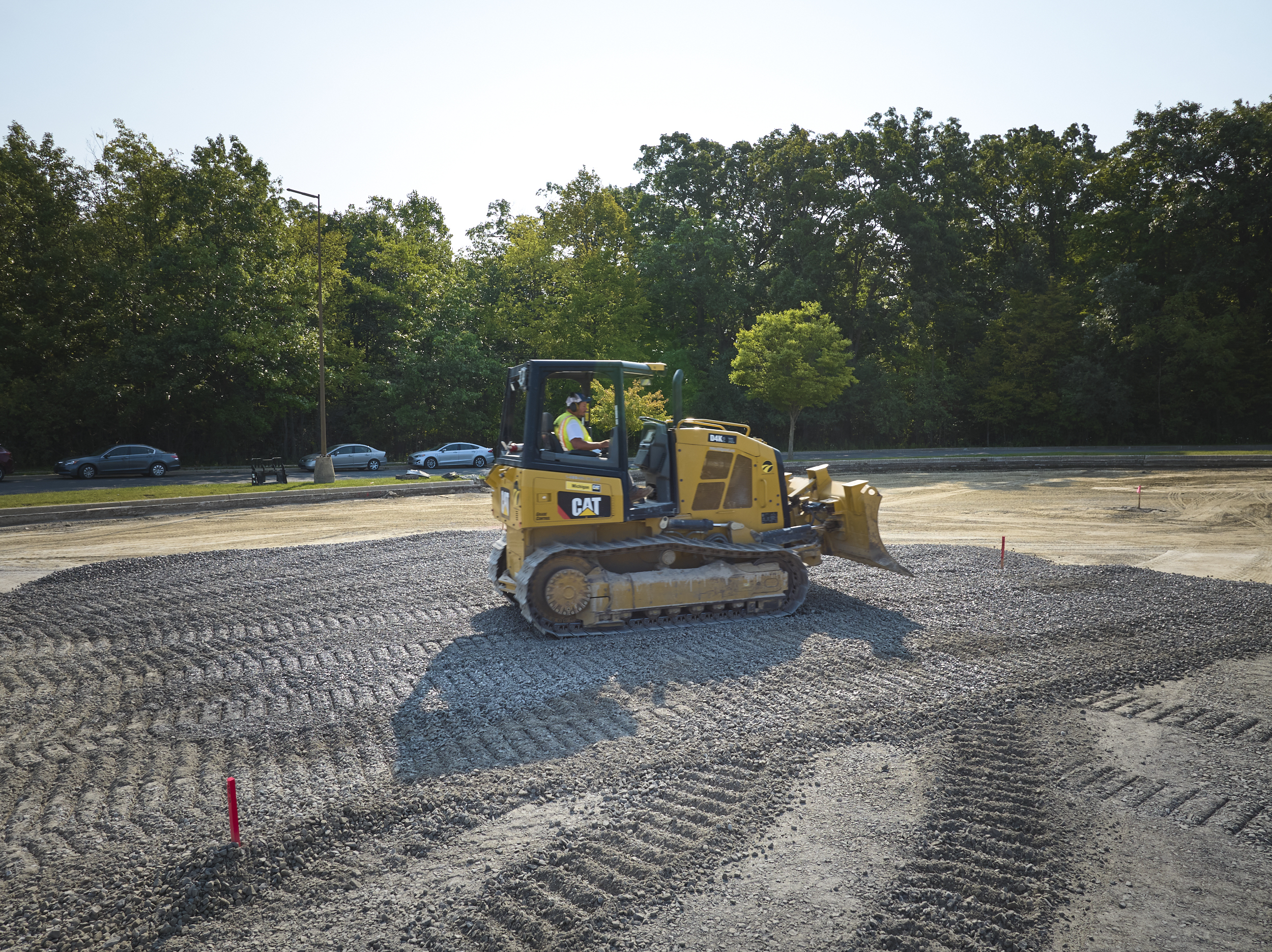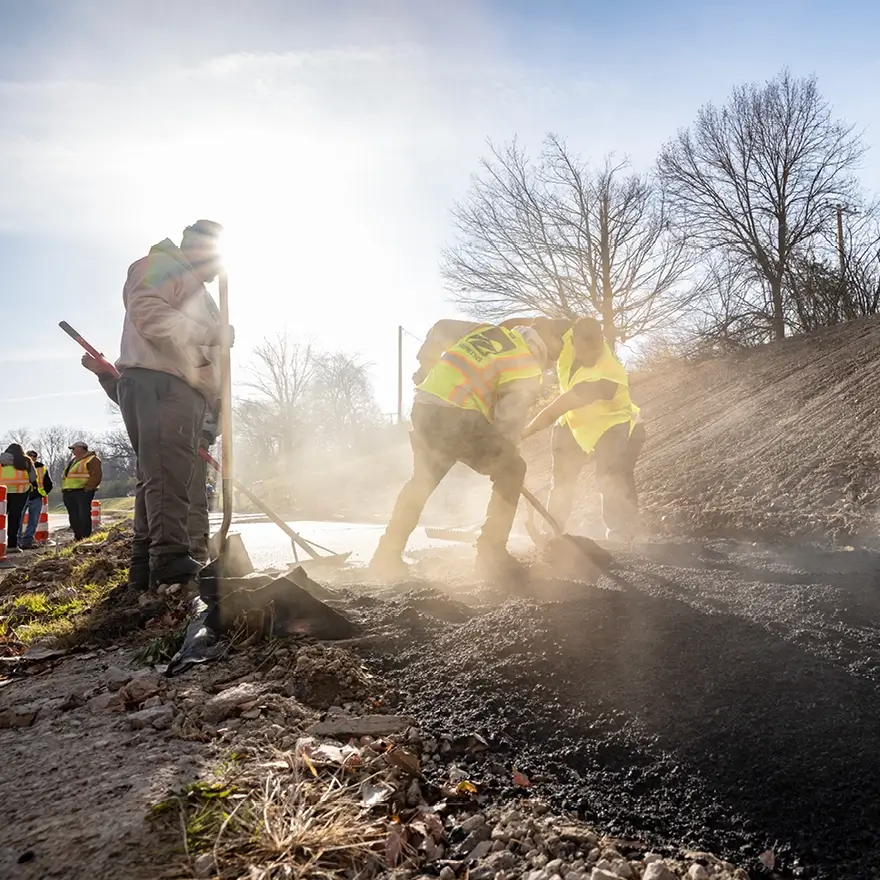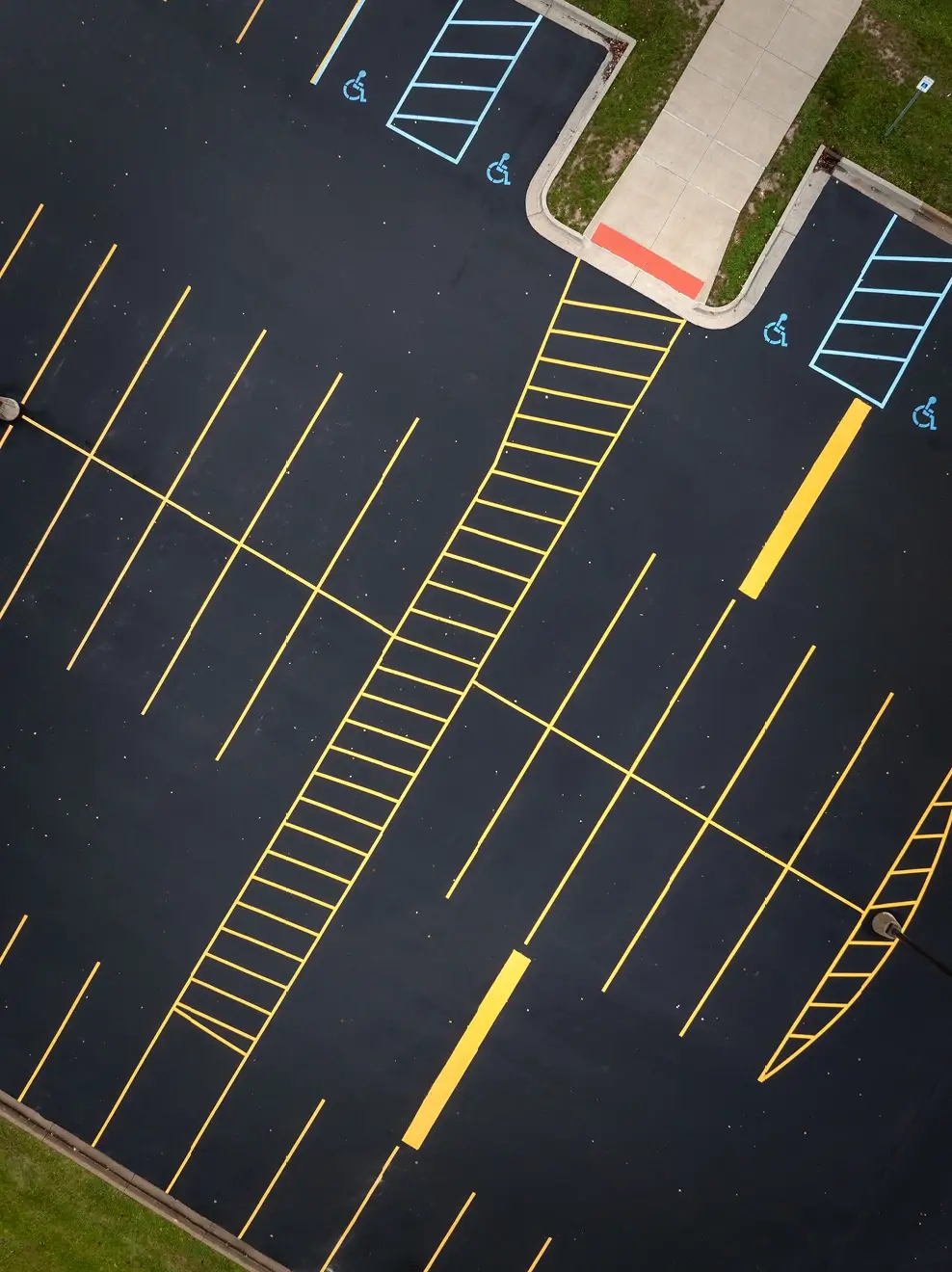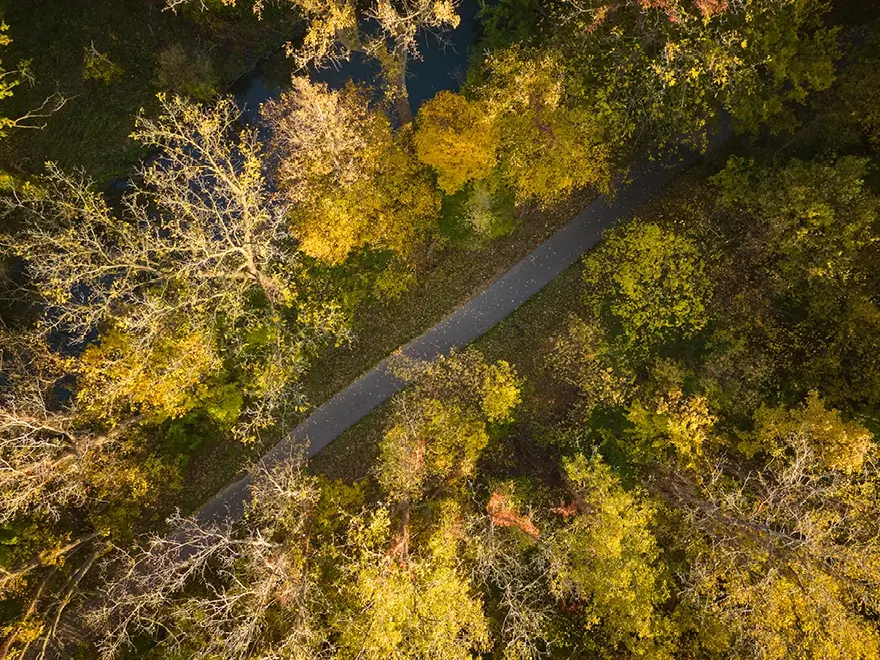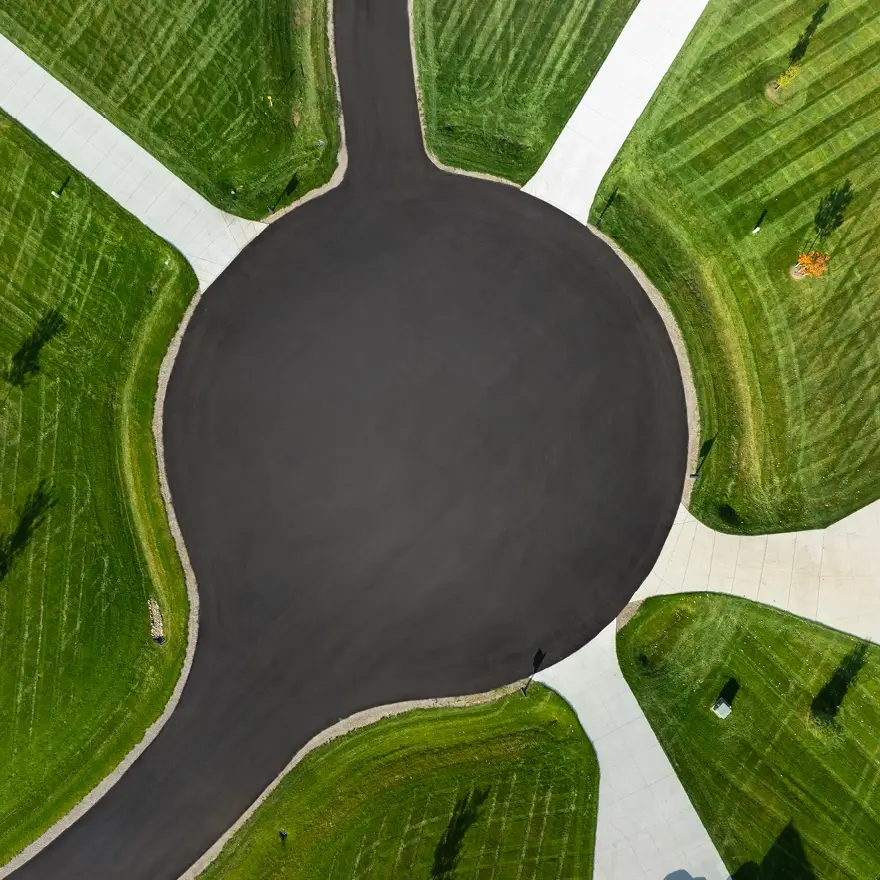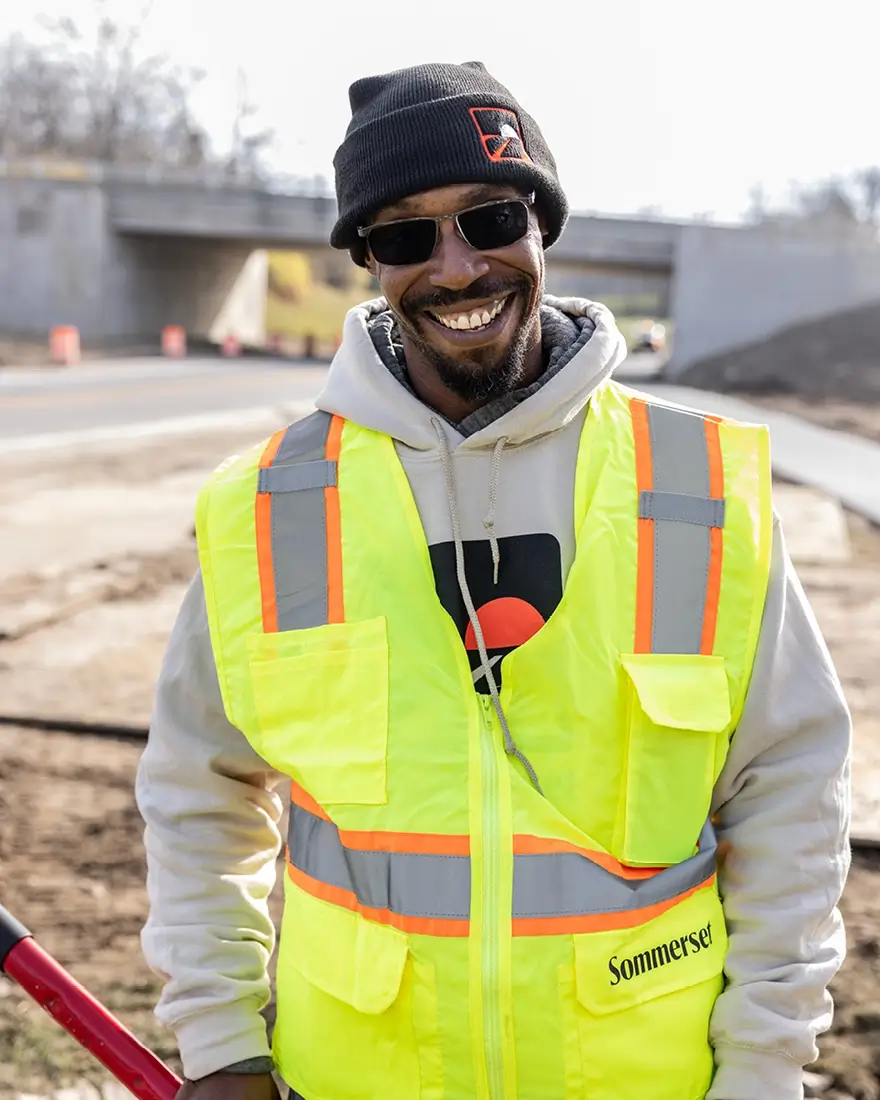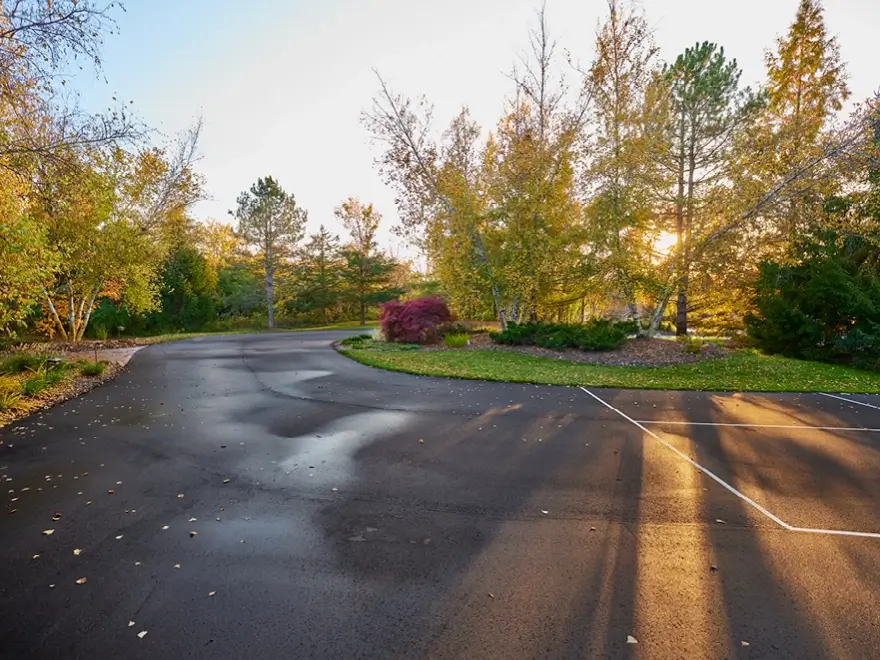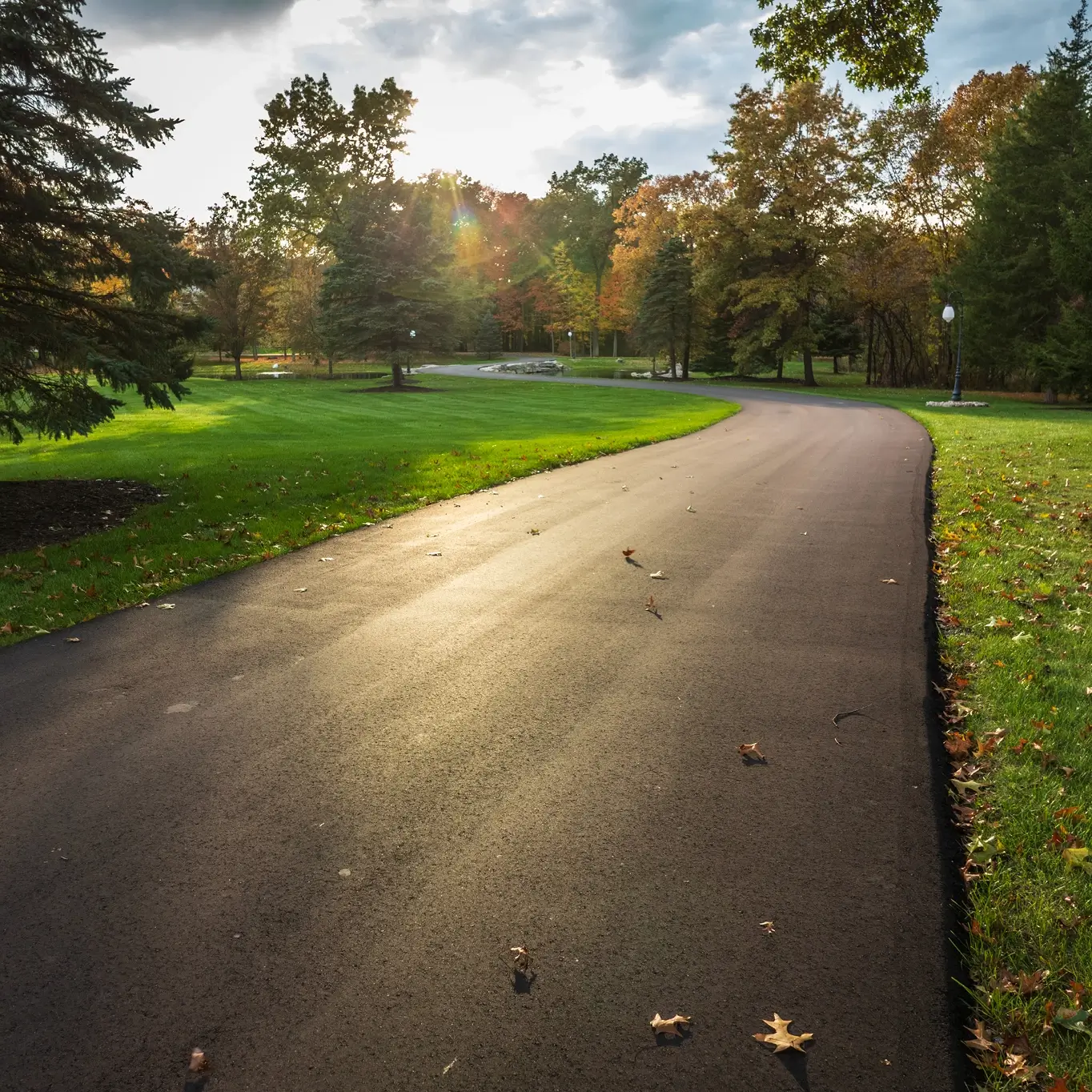
Our Site Grading Experts at Work
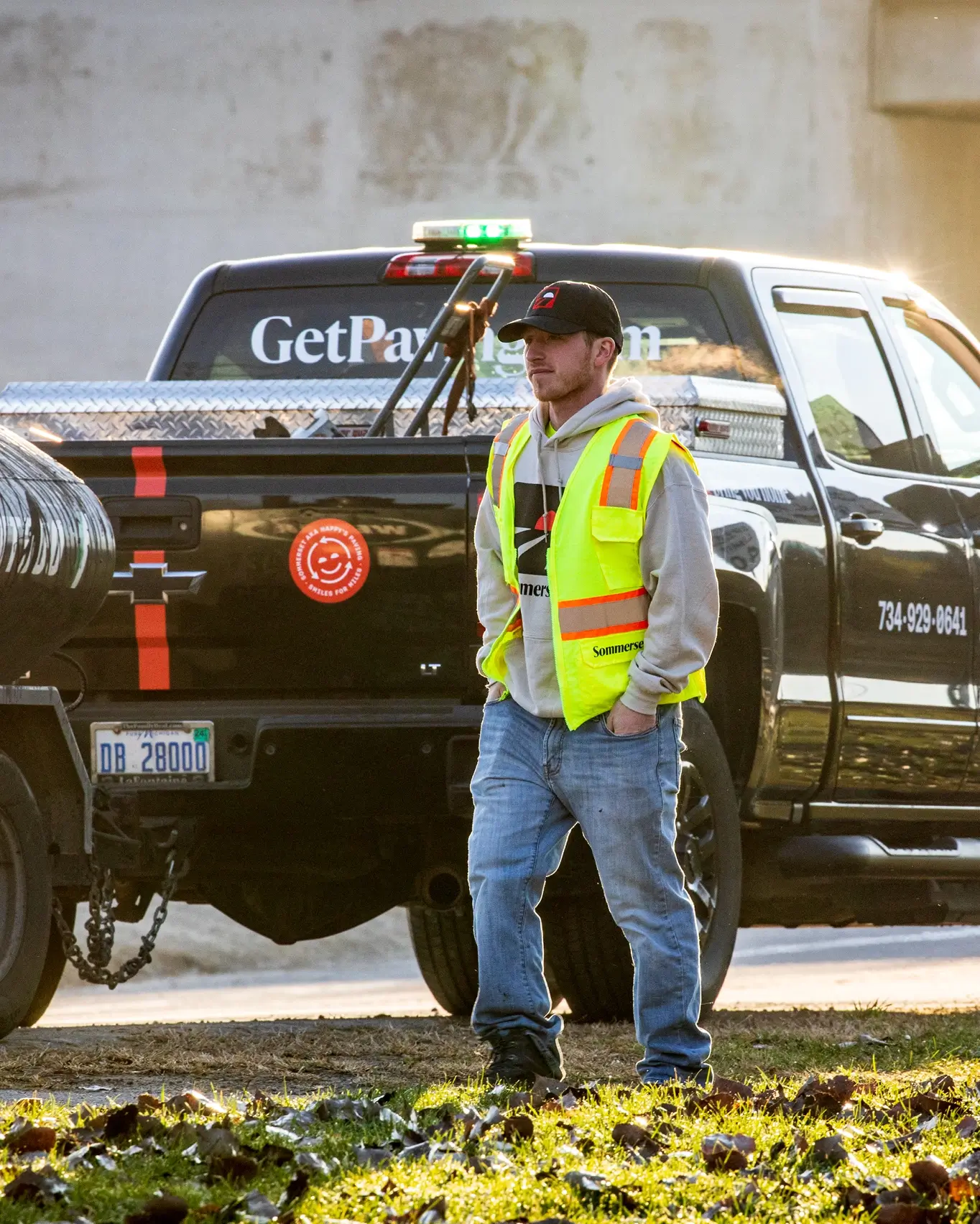
Nobody thinks about the relationship between water and pavement until cracks, puddles and slippery spots appear. At Sommerset, water is an obsession that runs constantly through our minds.
How and where will it run off? How might we prevent ground saturation on your property and do our part to ensure sure water drains properly – making standing water virtually impossible? What’s the optimal elevation, and what degree of pitch should the asphalt have?
Whether it’s a parking lot, pathway, driveway or highway, pavement should be perfectly even but never perfectly perpendicular to walls and flagpoles. Not even on the flattest landscape. Think about it: if the surface doesn’t slope one way or another, rain falls and stays put. Tilt it the wrong way or not at all, and an inch of rain will soak your shoes or turn your manicured lawn into a swamp. Then, it’s only a matter of time before pools become potholes become capital-P Problems.
Standing water is fine for frogs but not for people, cars, bikes and landscaping budgets.
When it comes to grading and leveling, our civil engineering and surveying skills come to the rescue. “Where will water come from, and where should it flow?” is among the first questions we ask when tackling asphalt replacement or new construction. Only after studying the landscape, the soil and the traffic can we plan our approach for your project.
After multiple rounds of verifying grades or elevations as we build or restore the asphalt, you’ll have a beautiful, strong and safe stretch of pavement. Underneath, a hidden wealth of science and hard-earned knowledge. And above the asphalt? Life as usual. Nobody thinks about it. Everyone gets home to what matters most. And that’s exactly how we want it.
Here’s how we’ll make the grade for your project.
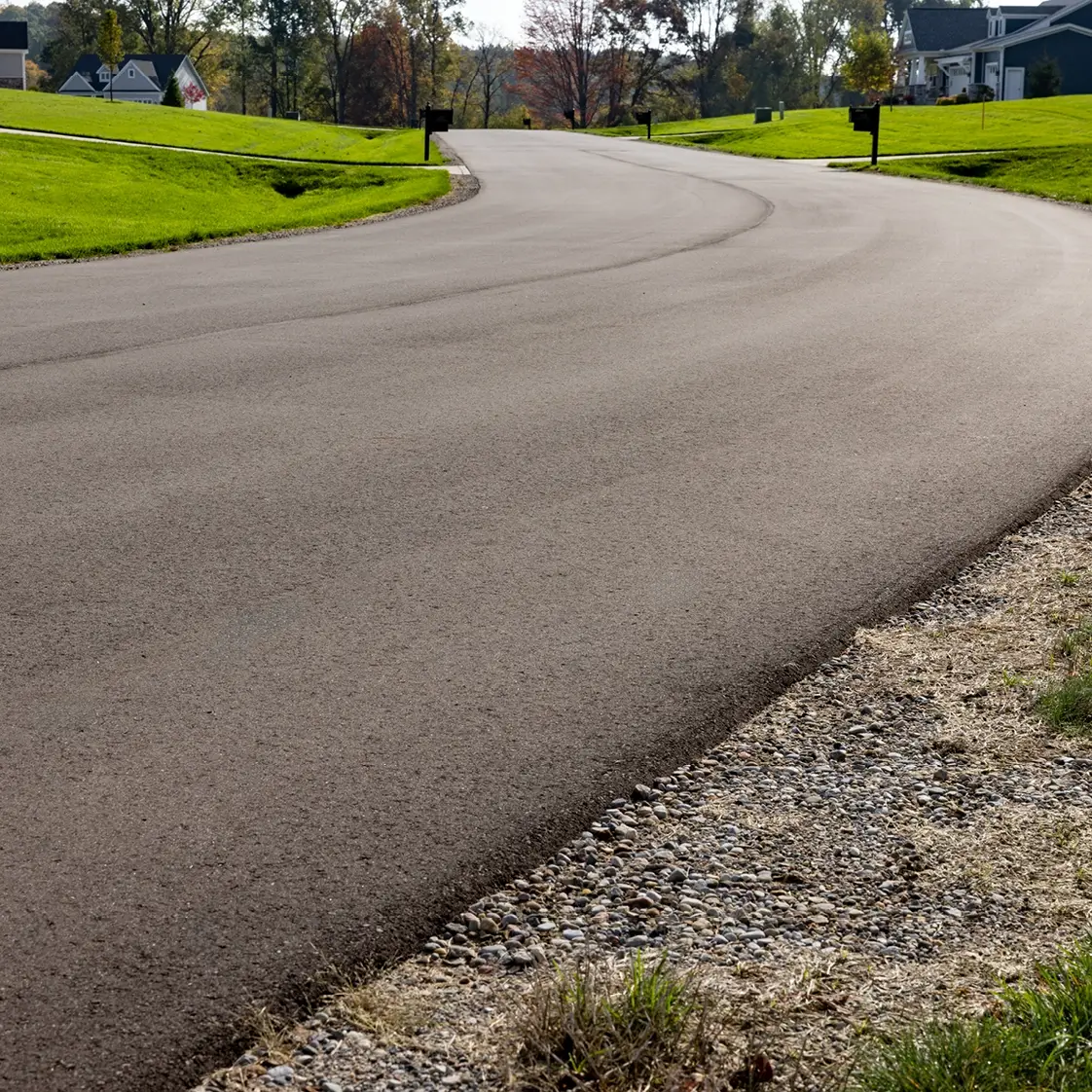
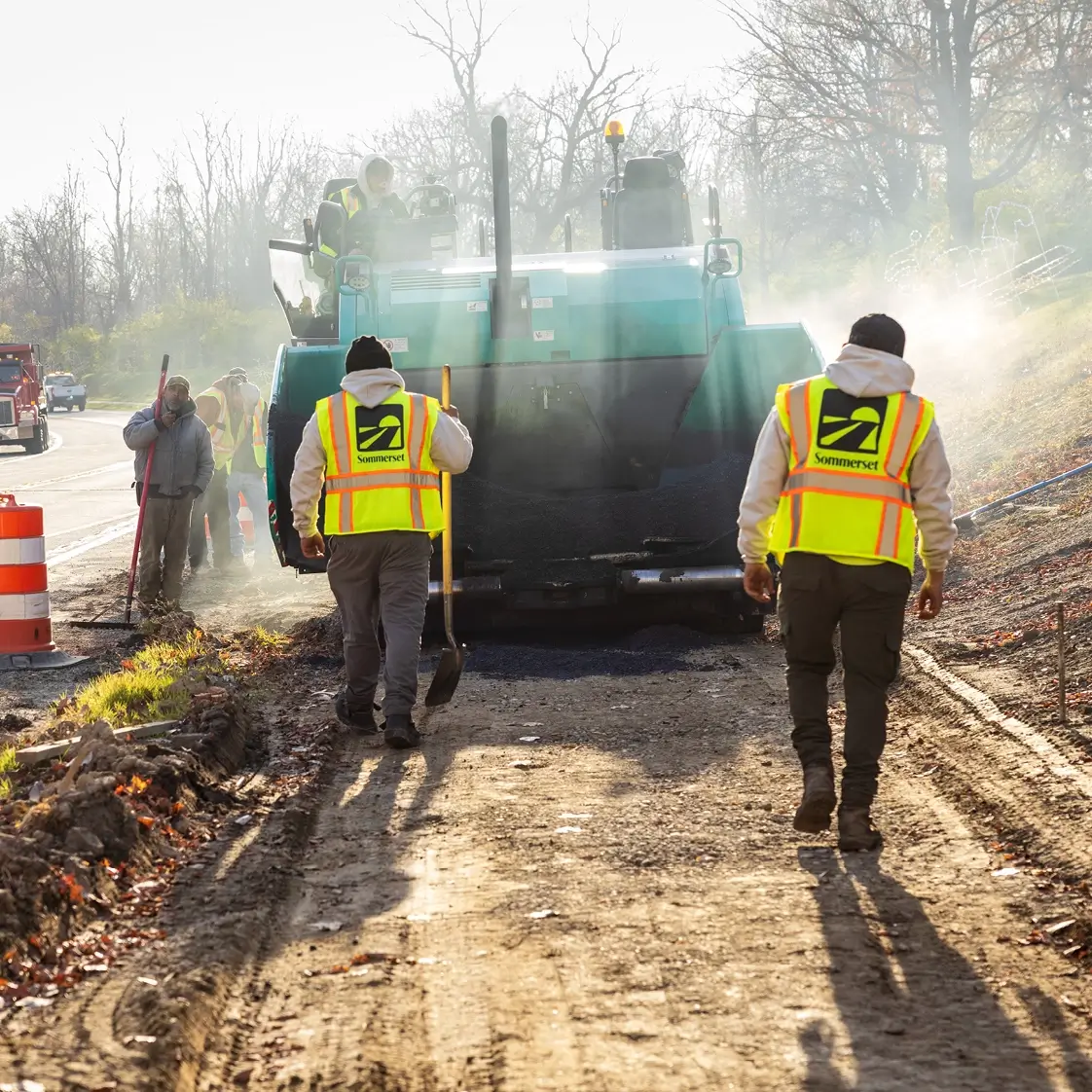

Asphalt thicknesses are always site-dependent and carefully calculated to suit your needs. For instance, on commercial and municipal jobs, we might lay down 2.5″ of hot mix base course asphalt and compact it to 2″. Next comes 2.5″ of wearing course asphalt that we also compress down to 2″ for a finished thickness of 4″.
For residential asphalt, we typically install two layers at 2″ each. Each layer is compacted to 1.5″, leaving a finished 3″ thickness. Again, it’s case by case, and we take nothing for granted in the soil, the shape of the terrain and the purpose of your pavement. Like you, our solution will be one of a kind.
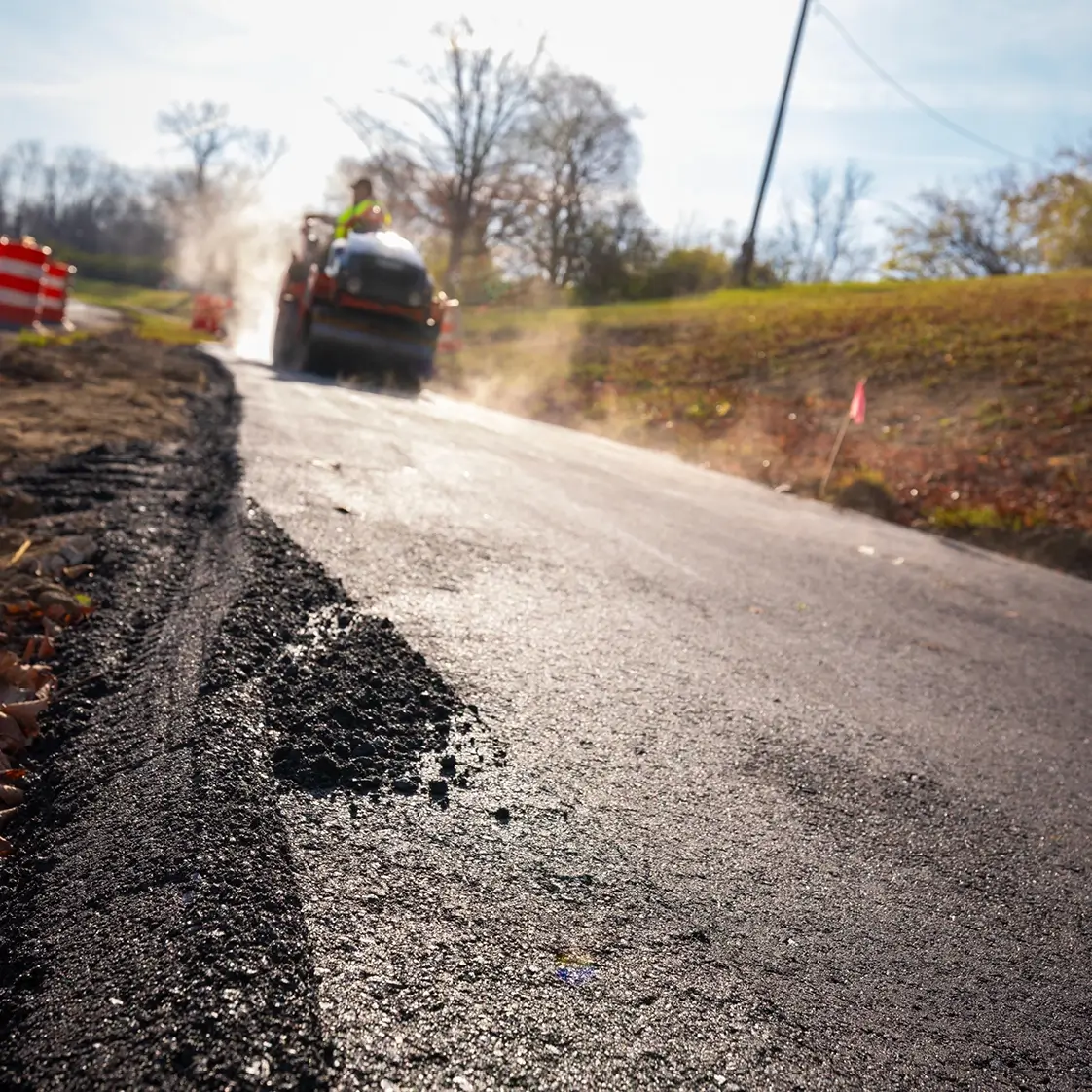
Municipal paving requires a list of bona fides, solid references and a price that maximizes a taxpayer’s dollar. Commercial jobs require building under traffic most of the time and are time-sensitive 101% of the time. Nothing’s more personal than your own driveway. And all of it, all the time, has to strike the right balance of beauty and strength.
Sommerset has the knowledge, experience and capacity to solve even the most complex paving problems. Get a free quote today, or explore the links below to learn more about how we approach projects like yours.

Other Services We Offer
If you can stroll, roll, run, bike, drive or fry an egg on it in July,* Sommerset can pave it.
We’ve got all the ways covered from highways to walkways. Asphalt paving and maintenance for next-door neighbors and international brands, from minor touch-ups to major overhauls. On overpasses and under traffic. Browse out the links below to learn more about our range of services.
*Not recommended unless you like tire-flavored eggs.
From a friendly voice on the first call to smiling faces in the final stages. For asphalt and concrete, driveways and parkways. Check out our services overview to see the full gamut of pavement problems we solve – and how we can turn your stumbling blocks into distant memories.
